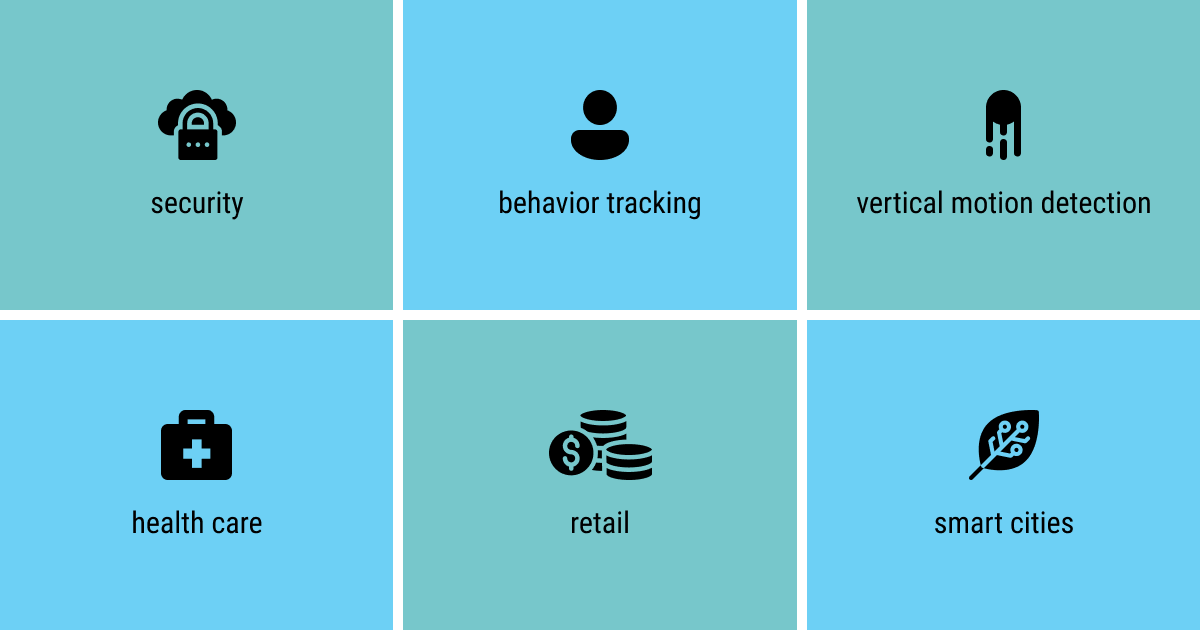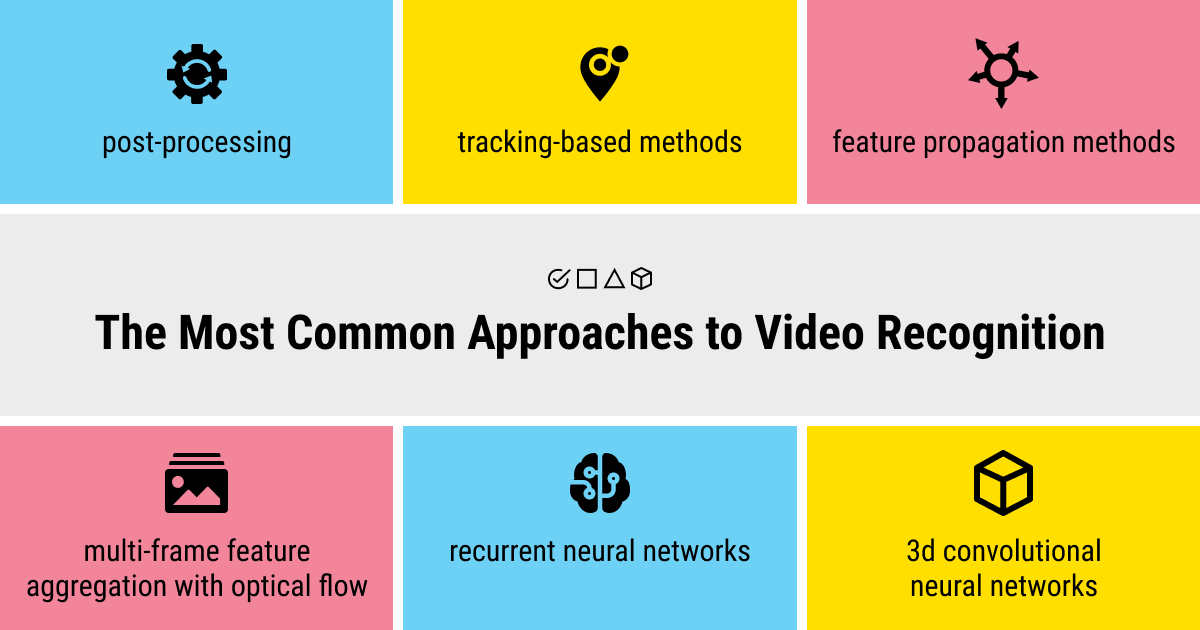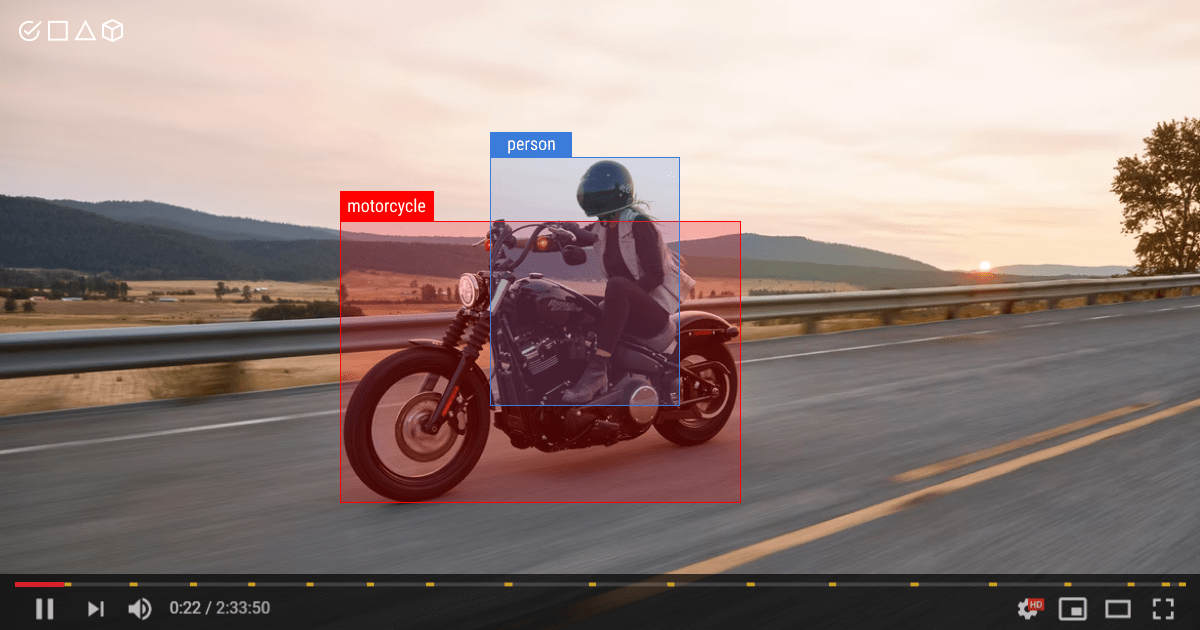AI Video Recognition: Why Does It Matter?

Visual perception of the three-dimensional structure of the world is an effortless experience for humans. However, this process is a lot harder for computer vision algorithms because they don’t see as humans. Plus, CV algorithms are notoriously prone to errors.
Visual experience via digital mediums like video is becoming more commonplace in today’s tech-oriented world. Video usage is rapidly increasing in lockstep with technological advancements. The amount of video footage people have is overwhelming. But this also entails more challenges to monitoring and analyzing videos based on:
- The capacity of the video data
- Our cognitive skills to internalize video content.
When it comes to video technology, we can’t help but mention the importance of video surveillance in modern society in terms of safety, security, and protection. Still, analyzing mass video footage for a specific task (e.g., solving criminal activity or finding a missing child in a shopping mall) is time-consuming and tedious. When you have thousands of hours of video footage to analyze – the task becomes almost impossible.
The mission was set for AI to address this challenge with video recognition.
What Is AI Video Recognition?
Today, video serves as critical evidence in different situations (e.g., law enforcement or security investigations) because it holds a lot of valuable data. On the other hand, video is a very unclear format that lacks structure, scheme, and context, making it hard to deal with. But machines know how to handle this type of data with video recognition.
Video recognition is the machine’s capacity to obtain, process, and analyze data that it receives from a visual source, specifically video. Video recognition systems help computers comprehend the information coming from the large volumes of video feeds, frame by frame.
Despite its name, video recognition is not the same as image recognition or facial recognition. Although these terms are interrelated, the main difference here is video tracking – when a camera links target elements in sequential video frames to recognize moving objects over time.
Broadly speaking, we can refer to video recognition as intelligent video analytics or video content analysis as it entails a wide range of tasks. AI is used here to rapidly process mass video data and reduce the time for analysis from weeks or months to literally seconds. Video recognition employs AI to complete the tasks by applying computer vision (CV) enhanced by deep learning (DL) models to recorded video footage or live video streams.
AI Video Recognition in Different Industries

As of today, different types of video recognition systems are successfully deployed in specified industries, including:
- Security: object recognition, facial detection, movement pattern detection
- Behavior tracking: loitering detection, stopped vehicle detection, camera sabotage
- Vertical motion detection: abnormal occurrences detection
- Video feed object classification: X-ray security screening, danger detection
- Health care: at-home monitoring, mental health, biotechnology
- Retail: queue detection, people counting, customer behavior analysis
- Smart cities: Automatic Number Plate Recognition (ANPR), traffic monitoring, vehicle counting
The combination of DL models and CV systems is used to detect, track, recognize, and classify objects of interest. AI solutions are necessary for video recognition, as they enhance current CV capabilities and the accuracy of object detection systems. By generating rich metadata, AI helps to pinpoint important elements in the video to set the criteria for faster video recognition, namely:
- General features: names, objects, scenes, actions, and events
- Personal features: gender, race, age, accessories, face masks, faces, vehicles, and license plates
If you want to build a system (e.g., self-driving vehicle or robotic system) on top of computer vision or automatically generate a search index for your video collection, this is the kind of information that you need.
How Does Video Recognition Work?
The cutting-edge AI video recognition allows us to rapidly assess video data by detecting people, vehicles, objects, and behaviors of concern. We can stop here and not dwell too much on the details. But to give you a better idea of video recognition, let’s take a look at some of its core tasks.
When a video recognition hardware architecture is prepared, you need to focus on a specific scenario and train your model to detect it. The following are the most common and fundamental video analytics tasks:
- Image classification: select the right category for a video
- Localization: locate a target object in the video
- Object detection: locate and categorize the object in the video
- Object identification: detect all the instances of the object of interest
- Object tracking: track the object’s trajectory and its change in the video
When we receive information on how the object’s state changes over time in the video, we are working with temporal information. We can then build a state transition model based on spatio-temporal data for video objects. This process usually requires a complex set of algorithms built one over the other for the DL model to multitask. For example:
- Identify and locate an object in a video using Convolution Neural Network (CNN)
- Monitor the change of object’s state over time using Reinforced Neural Network (RNN)

Now, let’s recap! To process raw video footage, a video-based recognition system:
- Analyzes the context of a video scene and its background
- Recognizes, tracks, and classifies an object of interest
- Generates a structured database from unstructured video data for a granular search, detailed report, and smart alerting.
Annotating Data for Video Recognition
Like for any other AI model, video recognition data needs to be trained for an accurate prediction to achieve desired results. For video recognition to properly function, we need a dataset with training data that will be fed into an artificialneural network (ANN) and further used for AI model testing.
A video recognition dataset has to adhere to specific data requirements. That is, the type or the amount of video data. Here’s the example of video formats one can work with to label the video footage:
- .MOV
- .MPEG4
- .MP4
- .AVI
Data labeling for video recognition is quite a fascinating process. For video annotation, you need to pinpoint every object in the video using frame-by-frame annotated lines so that computers can easily recognize them. It’s a bit more complicated than image annotation since the object that we work with is in motion.
Another challenge here is the huge amount of video datasets used for labeling. Even short videos are annotated frame-by-frame, meaning that the data volume increases exponentially. For this reason, many companies or individual clients working on AI projects opt to outsource this process to data annotation experts, like Label Your Data.
We guarantee a high level of accuracy and speed of video annotation using our +10-year experience in creating cutting-edge labeling projects. Our team of data annotation specialists cares for the security of your data, so you can rest assured that your video annotation project is safe and sound.
Data Annotation Tasks for Video Recognition
The most common video data annotation techniques are 2D bounding boxes, 3D cuboids, landmarks, polylines, and polygons.
But let’s dig deeper into this process. Suppose you need a dataset to perform a video action recognition task. Such a dataset is built the following way:
- Feature identification. Preparing the action list based on previously labeled datasets and adding new categories, considering the use case scenario.
- Data collection. Acquiring videos from multiple sources that match your action list.
- Data labeling. Performing temporal annotation manually to detect the action’s start and end positions.
- Data processing. Cleaning a dataset through deduplication (eliminating redundant data) and filtering out noisy samples.
We’ve also prepared a list of the most popular large-scale video action recognition datasets:
- HMDB51
- UCF101
- Sports1M
- ActivityNet
- YouTube8M
- Charades
- Kinetics400
- Kinetics600
- Kinetics700
- SthV1
- SthV2
- AVA
- AVA-kinetics
- MIT
- HACSClips
- HVU
- AViD
Alternatively, you may want to work with a video face recognition system where you need quality video-based face verification datasets. To achieve excellent results with an unconstrained video face recognition system, you can resort to IJB-A, JANUS CS2, LFW, YouTubeFaces, WIDER, FDDB, and Pascal-Faces datasets.
Speaking of facial recognition, we should also mention video gesture recognition tasks. Studying hand and arm motions is crucial for developing smart interactions with digital devices in AI. Montalbano, Chalearn 2016 Isolated Gestures, or Jester datasets are to be of use for this mission.
Video Recognition with Deep Learning
Over the past few years, video recognition has evolved to the point where it can accurately detect, identify, and classify people and objects that appear on video footage. A system based on deep learning models helps generate searchable results within a vast amount of video data and filter it for in-depth analytical capabilities.
Modern video recognition relies on deep learning algorithms. Let’s say, you want to improve the security system in your organization to prevent criminal activity or prepare for any potential threat. Your solution here is to use video recognition trained specifically for your surveillance cameras that will help to locate such abnormal situations.
Despite the complexity of the task at hand, we need fast analytical output from video recognition algorithms. Why is deep learning essential here? DL revamps the video recognition system by accelerating the processes of:
- Searching and filtering video data based on specific criteria
- Providing rule-based alerts to achieve situational awareness
- Visualizing and analyzing video data to drive operational intelligence.
The Main Approaches to Solving Video Analytics Issues
Video data is challenging because of the relevant blur, occlusions, or unusual object poses. Besides, objects’ appearance can deteriorate in some frames. There are certain approaches to solving this video recognition problem:

AI Video Recognition Open-Source Technologies
The video recognition process has been significantly facilitated by the increased availability of best-in-class free and open-source software (FOSS). As a result, we now have access to numerous efficient platform-independent libraries and repositories. Here’s the list of some of the most popular open-source frameworks and libraries for AI video recognition.
Video Object Recognition with TensorFlow API
TensorFlow is arguably among the most widely used open-source AI libraries and the best video recognition software. It enables GPU-accelerated video object detection: motion detection and real-time thread detection in gaming, security, and UX/UI fields. The framework gives access to useful libraries like Faster R-CNN and Mask R-CNN or can be applied as a front-end for other networks, such as YOLO.
YOLO (You Only Look Once)
YOLO is an autonomously maintained video recognition system that works in real-time at very high frame rates. The newest version of YOLO uses a fully convolutional neural network (FCNN) to predict multiple bounding boxes at once.
SSD Multibox (Single-Shot Detector)
SSD Multibox is a Caffe-based video recognition system using a single neural network to create a feature map for probability estimation based on objects detected within segments of a single image.
ImageAI
ImageAI is an ML library for Python upholding video recognition and analysis. It’s most commonly used as a host for many relevant libraries, such as RetinaNet, YOLO V3, and TinyYOLO V3. ImageAI has switched to PyTorch backend, but it still lacks the ripe ecostructure and flexibility of market leaders.
TorchVision
TorchVision is a GPU-accelerated CV add-on for the PyTorch project, which is led by Facebook. The framework supports the most popular video datasets, like COCO, CelebA, Cityscapes, ImageNet, and KITTI. It also features pre-trained models for addressing video recognition tasks.
Commercial APIs for Video Recognition
- Google Video Intelligence API: offers a wide variety of production-ready features for video object recognition.
- Amazon Rekognition: provides a broad range of pre-trained models and tools for individual model training.
- Microsoft Image Processing API: includes many easy-to-use video object detection algorithms.

Summary: Can We Teach Machines the Magic of Sight?
The natural human skill of visual sensation made AI pull the trigger and take a shot at intelligent video analytics.
Breakthrough video recognition was a necessary step towards accelerating the process of video analysis and complex object recognition systems. Video recognition assists machines in understanding the extensive video material and transforming it into meaningful and actionable data.
The process of preparing the data and performing video recognition is rather laborious, but not as complicated as when we had to analyze video footage ourselves. The emergence of video recognition made it possible (and easier) to exploit the full value of video data. Doing so helps computers approach the real-world power of sight.
It’s still an evolving field, so make sure your nascent AI project is supported by true industry experts like we are at Label Your Data. Don’t hesitate and get your quote now so we can help you prepare the video data for a machine-led video analysis!
Written by
Karyna is the CEO of Label Your Data, a company specializing in data labeling solutions for machine learning projects. With a strong background in machine learning, she frequently collaborates with editors to share her expertise through articles, whitepapers, and presentations.

